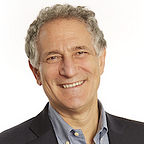Building urban tech tools starts with listening to cities
The conversations we had about the future of mobility during the DOT Smart City Challenge were just the beginning of a longer collaboration.
Public transportation is absolutely vital to a great city, and local agencies are always looking for new ways to improve it. That was certainly the case when I was deputy mayor of New York and helped lead the city’s first subway extension in more than 25 years, culminating in the new 7 train station at Hudson Yards. And it continues to be the case for cities across the U.S. that are struggling to connect people and jobs in a way that’s both fast and affordable, especially lower-income residents.
That equity gap is what inspired Sidewalk Labs to start developing Flow, our transportation coordination platform that will use real-time travel data to help cities understand their road, parking, and critical transit networks with a precision that’s never before been possible. As a partner to the U.S. DOT Smart City Challenge, we opened the conversation with cities about the obstacles they face in planning their transportation systems, to get a sense of how (and even if) Flow might help. I shared some of those important lessons this week in a guest article at Fast Company Design:
For starters, cities told us that greater visibility into travel demand, via data, is a critical component to help them plan stronger transit networks. They also made it clear that they’re already developing a more integrated view of transport options across modes, as well as universal farecard technologies to match. And they’re testing new payment methods that can direct transit money to the residents who need it most, regardless of what mode they ultimately choose. Our role during these talks was to learn what the public sector is already trying, and discuss ways to help those trials become successful.
As I note in the piece, those discussions were just the start of a longer development process — a collaboration we’ll continue to pursue long after the challenge is done (congrats, Columbus!) through our partnership with Transportation for America. In the end we believe the ubiquitous connectivity and better data at the core of Flow will empower cities to manage and coordinate their transportation networks for the greater good of city residents. Maybe that means more buses. Or longer bike-share docks. Or new ride-hail partnerships.
Whatever the form, we know public transportation will play a big role in meeting 21st century urban mobility challenges. (Building more roads certainly isn’t the answer — at least, not if we care about making cities friendly for people, or about our planet.) What we don’t know is exactly how cities will use tools like Flow to improve transit. That’s for them to decide based on what the data tell them. We’re just here to help. And to listen.
